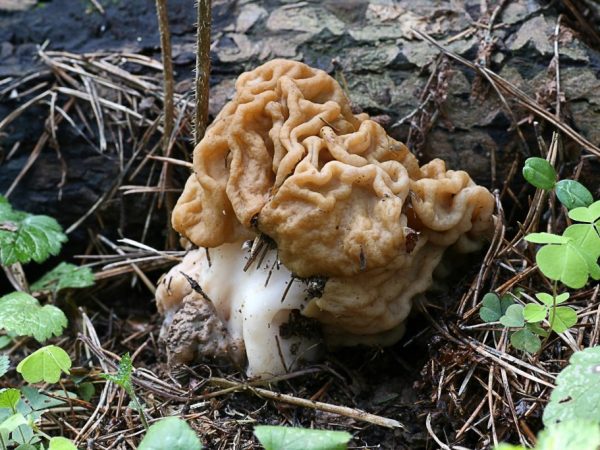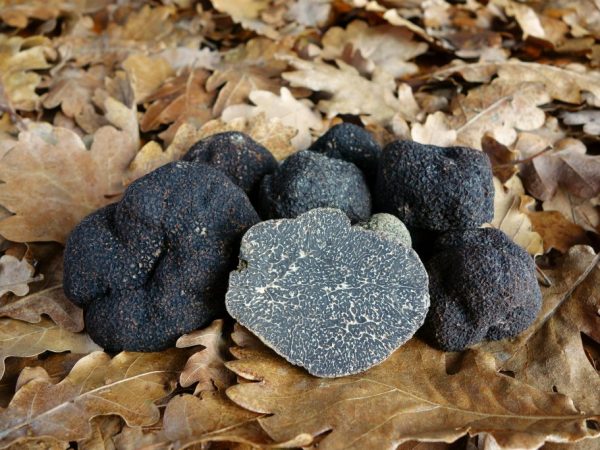Description of marsupial mushrooms
This class includes about 30% of all known species. Marsupial mushrooms, or ascomycetes, include various representatives that differ in structure and mode of reproduction. They are used in the food and industrial sectors.

Description of Marsupial Mushrooms
Class description
Includes primitive and higher species. The former include yeast, penicillus, pneumocystis, aspergillus. Some cause diseases in humans, others are used in the medical industry.
Irina Selyutina (Biologist):
The main feature of actinomycetes is the formation as a result of the sexual process of bags (asci) - unicellular structures containing a certain number of ascospores, usually there are 8 of them. Bags can be formed in two ways:
- directly from the zygote (in the lower ones);
- on the ascogenous hyphae developing from the zygote.
In the bag, the nuclei of the zygote merge, then meiosis with the formation of haploid (with a single set of chromosomes) ascospores. In higher ascomycetes, the bag is intended not only for education, but also for their active distribution.
The branched haploid mycelium, which is the vegetative body of the ascomycete, consists of multinucleate or mononuclear cells. Septa (septa) are formed in an orderly manner, synchronously with the division of nuclei. In some representatives, the mycelium can disintegrate into individual cells or bud. Yeast does not have true mycelium, and the unicellular vegetative body is capable of budding (less often, division) and sometimes forms pseudomycelium.
Edible species are found in marsupials. Examples:
- Morels;
- Morel cap;
- Truffles;
- Aleuria;
They differ in structure and method of reproduction.
The higher representatives have fruiting bodies, the usual underground mycelium and organs - a cap, a leg, like morels. Or a special tuberous underground structure, like truffles.
There are 3 subclasses:
- Hemiasomycetes: there are no fruiting bodies, and the spores are located in thin sacs on the mycelium.
- Euhacomycetes: bodies have a shell, inside which spores form. Spores are spread when the shell is destroyed.
- Loculoascomycetes: there are special places - locula, in which the maturation of spores occurs within the boundaries of the fruiting body.
Yeast has a unicellular structure, fruiting bodies are isolated only conditionally. The mycelium, in higher representatives of the cellular, is often placed inside the substrate. In the development cycle of higher marsupial fungi, reproduction plays an important role; it can be asexual and sexual.
Reproduction and life cycle
The reproductive organ of marsupial mushrooms is spores called ascospores.
The marsupial mushroom has asci bags, which contain material for sexual reproduction. The asexual type is less common, almost always realized through conidia (conidiospores, or mitospores).
The development cycle is two-stage:
- Anamorph (imperfect stage): The organism reproduces only asexually or vegetatively.
- Teleomorph * (perfect stage): Marsupial fungi form special structures and reproduce sexually.
Together, these stages are called holomorphs.Representatives have a different lifespan: yeast consists of microscopic parts of the mycelium, and the higher (by type of structure) morels and truffles are difficult to grow even in special conditions.
Features of life
Higher representatives of marsupial fungi choose a soil substrate for their life. Morels and truffles are delicious species that grow in a special climate and are appreciated by mushroom pickers for their taste. They can multiply by spores and mycelium, development largely depends on the external environment: soil nutrition, temperature, lighting.
The lower species are less demanding on external conditions. They withstand unfavorable factors for a long time, their characteristic feature is their rapid reproduction. Once on a favorable substrate, they begin to spread rapidly. The rooting site is not only the soil, but also food, waste, any inanimate objects. That is why fungal diseases are dangerous to humans, for example, Aspergillus fungi affect the respiratory tract.
Human application and significance in nature

Truffles are prized for their taste
Representatives of the Ascomikot department are used in cooking and medicine.
Morels and truffles are best known for their palatability. They are especially honored in eastern countries, where the climate for growing is more favorable. They grow in a temperate climate, closer to the southern regions, but in extremely small quantities. Yeast is essential. They are used for the manufacture of flour products, as well as as a fertilizer, in winemaking and cheese production (to impart a special aroma characteristic of this type of cheese).
An antibiotic is obtained from the marsupial mushrooms of the Penicillus species.
Ascomycetes are obtained from:
- enzymes;
- vitamins;
- alkaloids;
- organic acids;
- feed protein.
Some species have been used in genetic studies. In nature, saptotrophs, representatives of the department, process organic residues. They come into the form of coexistence with lichens, being at the same time obligate parasites, because studies have shown that algae without fungi survives, but the mycelium of the fungus, which is involved in the formation of the body of a lichen without algae, dies.
Marsupial fungi cause a number of diseases in plants: gray rot, powdery mildew, cereal ergot, apple scab.
Growing methods
If previously endangered species of ascomycetes were in danger, now, thanks to the developed industry and private farms, there are mushroom farms.
Growing truffles is a lucrative business, although they grow in the south of the country in a wooded area. They collect summer truffles in Crimea.
To grow a delicious mushroom at home, in addition to mycelium, you will need:
- Soil with pH (acidity) 7.5, high content of humus, calcium, well-plowed, saturated with air; free of other fungi and parasites.
- Middle-aged oak sprouts - the truffle forms mycosis with this particular tree.
- Dry climate.
- The temperature is about 16, 5 - 22 ° С in summer.
- Patience, because the first harvest will appear in 2-3 years, and the farm will fully begin to bear fruit in 5 years.
The easiest ways to grow morels in the garden. Apples play a big role in this.
Method 1: water, with which the fruit bodies were washed, and the pulp cut into pieces, are sprinkled on the garden bed. In the fall, they sprinkle it with a drop of apples, take rotten and fresh ones. For the winter, the garden is covered with leaves and hay.
Method 2: pour out the starting material (water, which washed the fruit bodies) directly under the apple trees. Cover with ash or straw before cold weather. Both methods are based on the favorable coexistence of morel and tree roots with which it forms mycosis.
Conclusion
Ascomycete mushrooms are diverse in their structure, development and mode of existence. The department includes edible food species, medicinal fungi, and harmful mold. A characteristic feature is the presence of bags with spores intended for sexual reproduction.
Truffles and morels, as gourmet species, are grown on an industrial scale, and penicilli are used in medicine.



